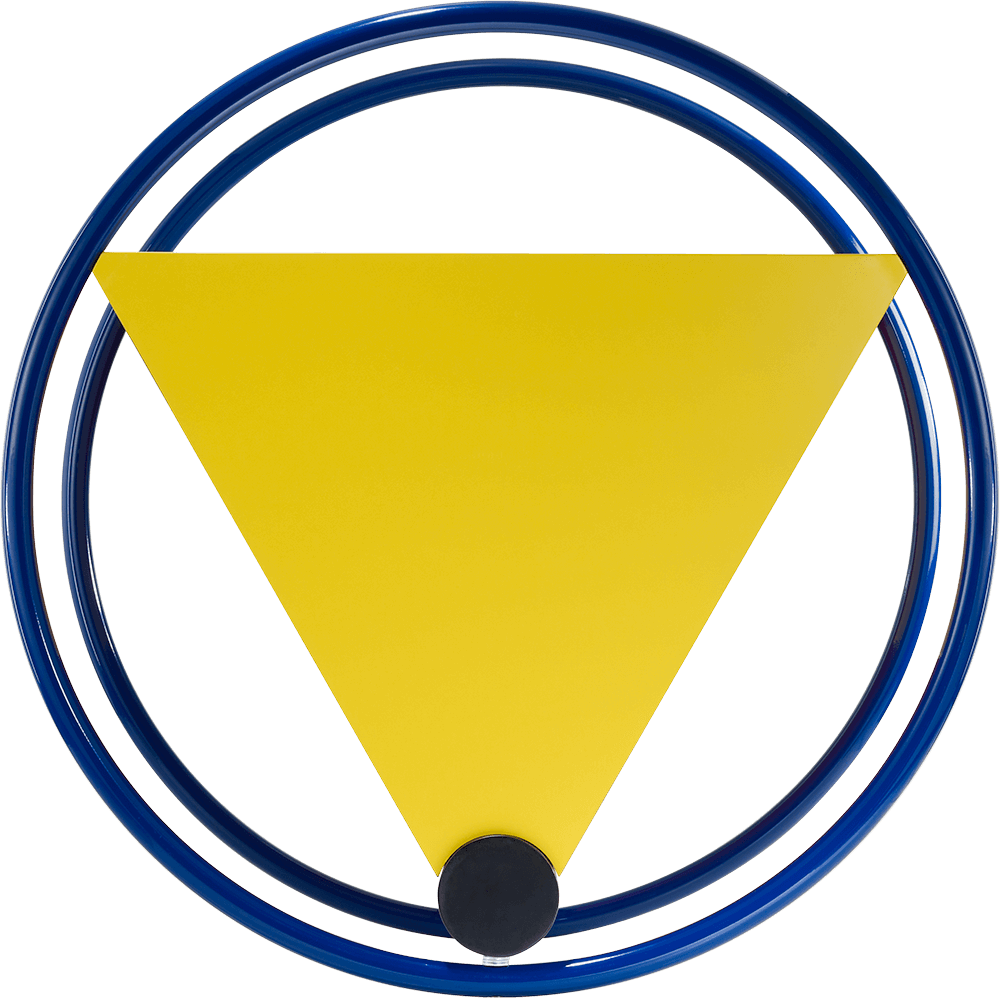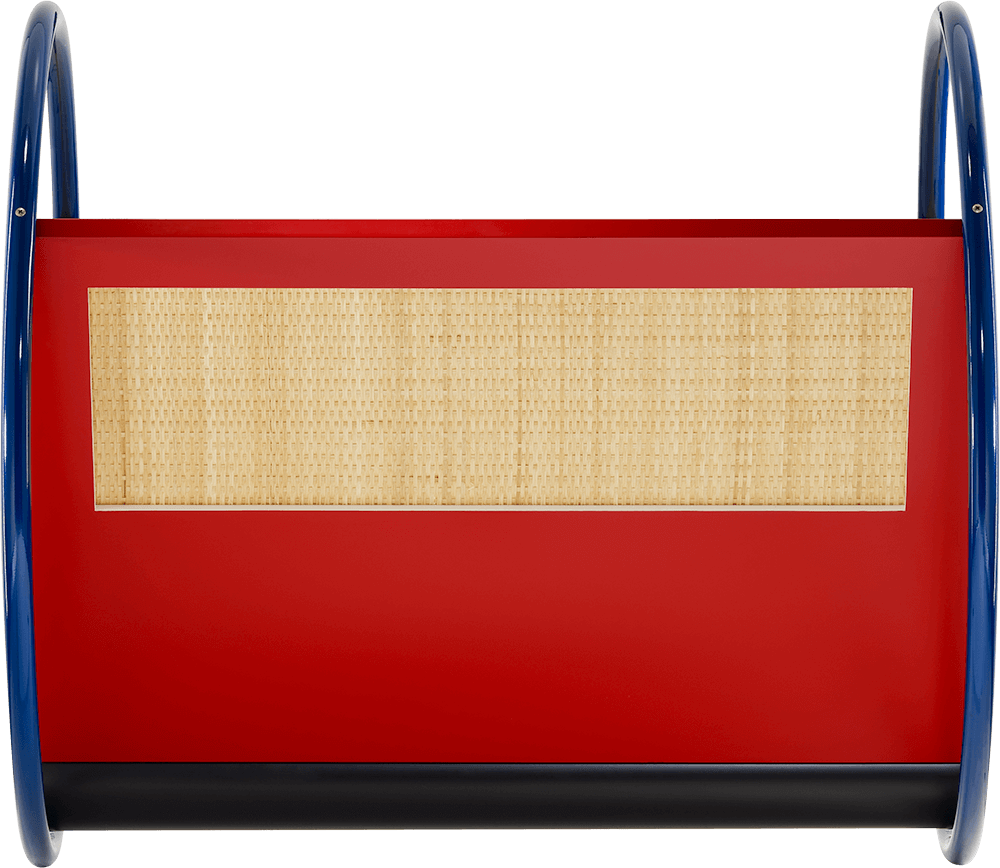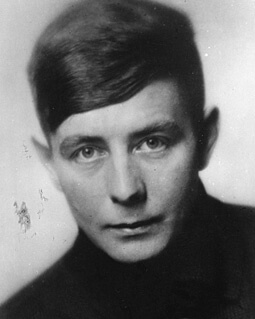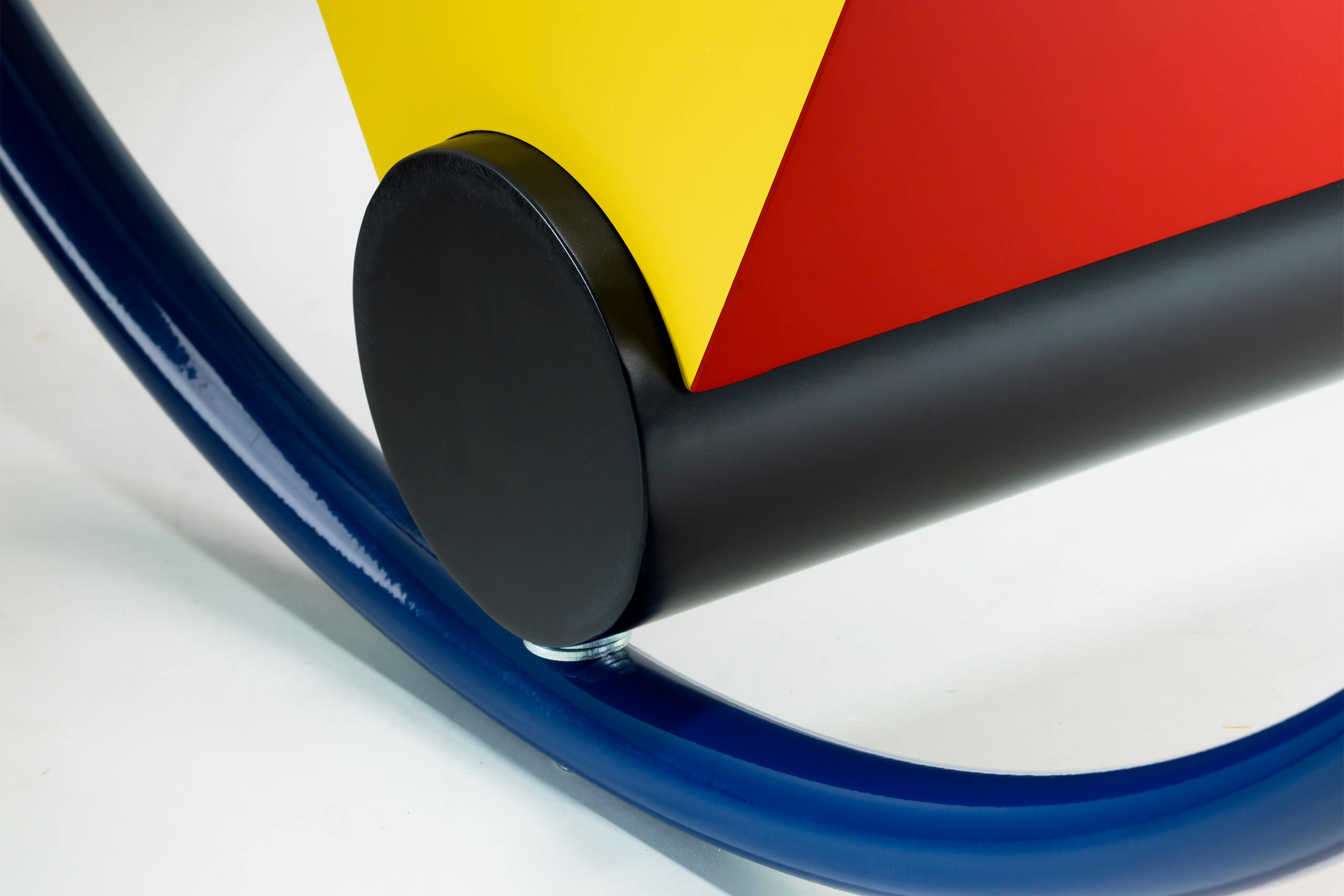
Bauhaus Cradle
Peter Keler
1922
Floating, swinging, rolling. At first glance, it is a break with the common notions of a cradle: Peter Keler’s cradle design dates from the early days of the Bauhaus, from 1922. A work of blue circle, yellow triangle and red rectangle, it makes tangible the influence that the synaesthetic colour theory of teacher Wassily Kandinsky had on Peter Keler. At the same time, it embodied the first idea of a floating, swinging and rolling object that became a symbol for the Bauhaus.
The small cradle (diameter: 60cm, length: 75cm) is available in the Tecta Shop.


Original drawing
Bauhaus Cradle
Peter Keler is one of the central figures who left a lasting mark on Tecta’s Bauhaus DNA. Starting with the first contact between Peter Keler and Axel Bruchhäuser in 1975.
Keler was so enthusiastic when he heard that Tecta wanted to produce his cradle that he gave the coloured original drawing to Axel Bruchhäuser.


In the early 1920s, the Kiel-born artist Peter Keler was a member of the Worpswede artists’ circle. There, Heinrich Vogeler, inspired by the English Arts and Crafts movement, had redesigned his house into a Gesamtkunstwerk and thus redefined the avant-garde colony as a project of the “Lebensreform”.



